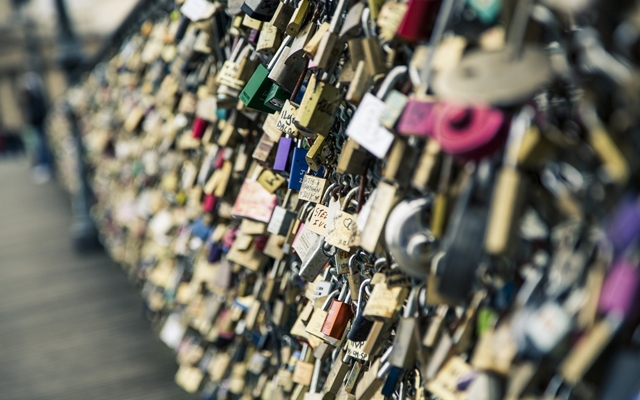The attachment of padlocks to Parisian bridges along the Seine is a symbolic gesture representing love and commitment that has been popular among tourist couples since 2008. However, this traditional romantic gesture has recently elicited concern from the Parisian government after the collapse of a five-foot railing on the Pont des Arts bridge due to the weight of hundreds of padlocks attached over the years. While the collapse did not result in any deaths or injuries, a re-evaluation of this romantic inclination has resulted in new methods being employed to encourage appreciation of the bridges in a manner that does not cause any deleterious effects.
Can social media trends effectively compensate for physical romantic gestures? The Parisian government is interested in that possibility. Paris City Hall has now started a campaign to encourage couples to post “selfies” on the bridges and upload them to twitter using the hashtag #LoveWithoutLocks. It is thought that the selfie trend would be a suitable alternative and popular enough to replace the posting of padlocks. Tweeting would also be a convenient way to spread the message around the world that Paris’ bridges can literally “no longer withstand your gestures of love” as the official campaign slogan states. Photos tweeted with the #LoveWithoutLocks hashtags would also be posted on an official website to further the campaign.
The campaign has certainly picked up steam, as concern with regards to the safety of residents and tourists traversing on these bridges, as well as the endurance of these bridges themselves, is of importance to many. The banks of the Seine are a UNESCO world heritage site, and the bridges which frame the banks are likewise of significant historical and cultural importance too. The Pont des Arts in particular sustained aerial bombardment during World War I and World War II, so preventing damage to the bridges along the Seine is a first priority for many.
Nevertheless, there are still many detractors who believe that posting photos on twitter isn’t as interesting or romantic as the traditional attachment of padlocks. There are also critics who believe that a twitter campaign isn’t effective enough, and that officials should take more aggressive measures to protect the bridges, such as completely banning the padlock placement entirely. Officials have hesitated from implementing a ban, but should the twitter campaign fail to deter tourists from placing locks, and thereby prevent further damage to the bridges, then a ban may become necessary. For now, the hope is that the campaign will pick up steam and create a far-reaching awareness of the importance of preserving Paris’ bridges.












